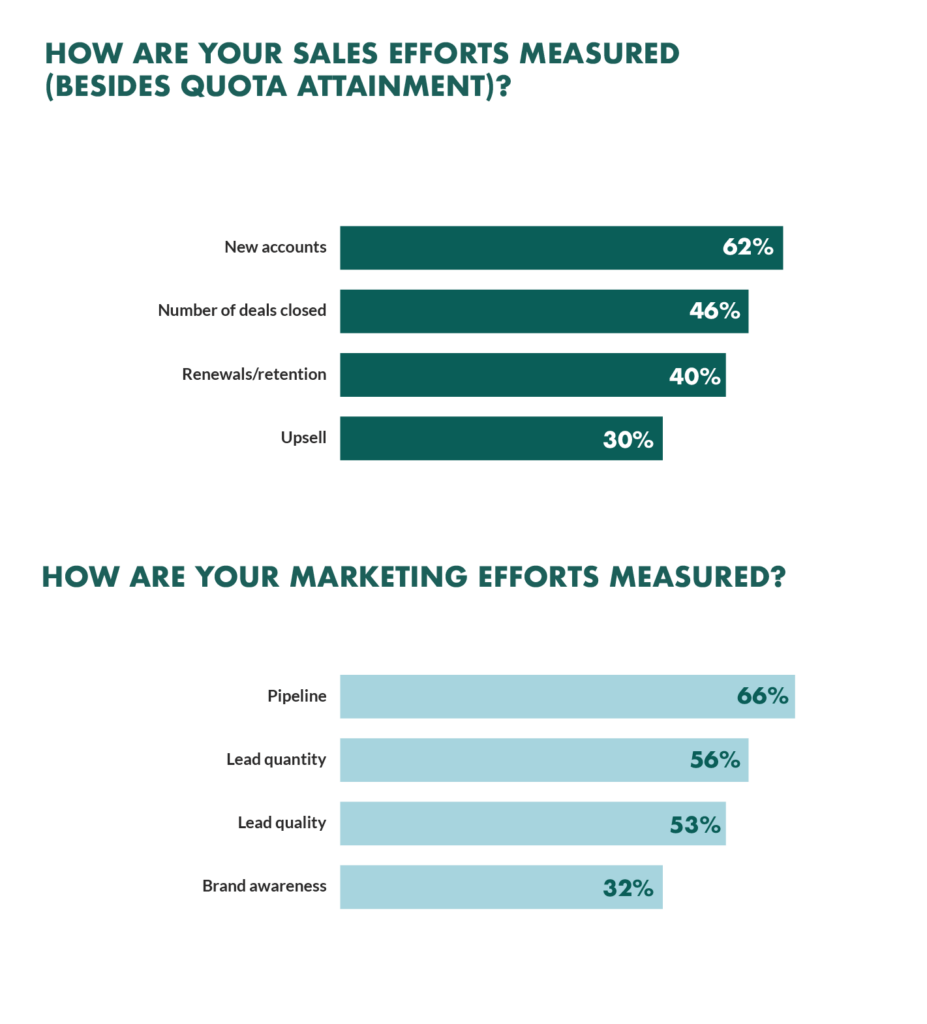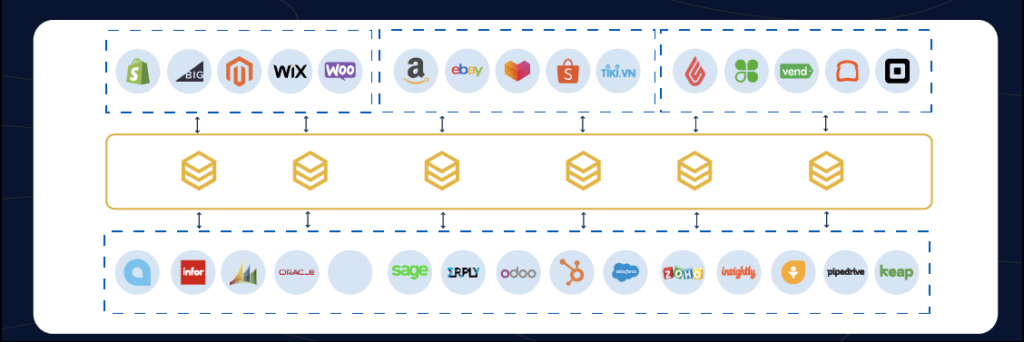In today’s fast-paced business environment, B2B technology companies face a myriad of challenges as they strive to remain competitive and meet the evolving needs of their customers. From keeping up with digital transformation to ensuring scalable growth, these hurdles can be significant. However, with strategic planning and the right tools, overcoming these challenges is not only possible but can also pave the way for substantial growth and success. In this article, we’ll explore three common challenges in B2B technology and offer practical solutions to help your business thrive.
1. Keeping Up with Today’s Fast Digital Transformation
The digital world is evolving at an unprecedented pace, making it difficult for B2B technology companies to keep up. Innovations such as artificial intelligence, machine learning, and blockchain are constantly reshaping the industry landscape.
According to Gartner, to face economic uncertainties in 2024, 61% of economic organizations have identified a clear plan for significantly increasing investment in technology compared to 2023 and signal an effective belief in software as a catalyst for growth.
By investing in technology, the workflow has generally changed in a positive direction. New advanced technologies help businesses improve their operations in many aspects. However, businesses that are based on data-driven but lack a management strategy and human direction ability and use new technologies without a deep understanding of them face the unpredictable risk of disorder within the organization. This situation leads to various consequences, including multiple handoffs between functions, extended turnaround times for projects, and missed delivery dates — issues they were likely aiming to prevent in the first place.
It’s very important to ensure that this rapid evolution does not burden your business, especially for startups or small and medium-sized enterprises, by:
- Refining technologies suitable for the organization’s infrastructure before deployment.
- Ensuring new technology integrates well with other applications in the ecosystem.
Moreover, to leverage new technologies daily without the constraints of being under the supervision of IT and business systems, businesses need to implement an integration and automation platform flexible enough to accommodate new technologies. This platform should seamlessly integrate with your business systems without disrupting business processes.
2. Running the Long Digital “Train” Challenge – Performance
Imagine introducing a new solution into a B2B business, like adding another car to a train. Each system, like a car, is interconnected, extending the train. However, the longer the train, the slower it moves, and the connections between the cars become potential conflict points. Adding new software and systems exacerbates the issue, creating a tangled web that’s difficult to manage and expand.

This problem underscores the challenge of integrating new technologies seamlessly with existing workflows and systems within an organization. Additionally, businesses should be mindful of the hidden costs and issues associated with point-to-point integration. Recognizing these challenges is the initial step toward discovering a more adaptable and scalable approach to system integration.
Otherwise, for businesses entrenched in Legacy systems, adding traditional “Trains” with new ones, and incorporating modern technologies and architecture, presents an exceedingly daunting challenge. Legacy systems, typically constructed on outdated technologies, tend to be inflexible, lacking the adaptability required to accommodate modern digital solutions’ demands. Integrating legacy systems with other SaaS applications poses challenges such as compatibility issues, complexities in data migration, and the necessity for extensive customization.
A carefully planned integration strategy is essential to minimize disruptions and optimize functionality. Here are the key aspects to consider:
- To ensure the smooth operation of the Digital “Train”, businesses require innovative applications that enable Marketing, Sales, and other teams to seamlessly use and share data across various departments and applications.
- New technology needs to be integrated seamlessly into the business’s current workflow. Identify their strengths, weaknesses, and compatibility with other digital solutions.
- Standardized protocols and open APIs (Application Programming Interfaces) play a crucial role in achieving interoperability between applications.
3. Scalability – ROI
Scalability is crucial for B2B technology companies, especially as they grow and handle increased demand. However, scaling operations often requires substantial investment, posing a challenge to achieving a positive ROI. The challenge arises from the necessity to strike a balance between substantial investments in technology, talent, and infrastructure and the imperative to demonstrate tangible returns to stakeholders. Overspending without a clear ROI can strain finances, while underinvesting may lead to missed opportunities for growth and innovation.
To achieve scalability and maximize ROI:
- Track Metrics: Define key performance indicators (KPIs) related to revenue, customer acquisition, and operational efficiency. In addition, joint KPIs for sales and marketing teams create synergy and provide insights into overall business performance, identifying weaknesses in the customer acquisition funnel for comprehensive improvements.

- Leverage Data Insights: Use data-driven decision-making to optimize processes and enhance customer experiences.
- Consider Integration Platforms: To track and monitor ROI indicators effectively, consolidating data into one central place or monitoring data flow between applications is crucial. This enables businesses to regularly evaluate ROI and pinpoint opportunities for enhancement, whether it’s scaling successful initiatives or discontinuing those falling short of expectations.
Fabric And Fringe Warehouse achieved 300,000 online-to-offline conversions by integrating Magento with Microsoft Dynamics RMS using the HexaSync Integration Platform. This comprehensive solution for data integration ensures real-time updates for product information and stock levels. As a result, their staff no longer spend approximately 50 hours each month updating the catalog and stock data on their eCommerce website. Additionally, 55,000 data changes were seamlessly integrated into the company’s systems, providing accurate and up-to-date product information and stock levels.

Overcoming These B2B Technology Challenges with the HexaSync Integration Platform
An Integration Platform as a Service (iPaaS) solution can be a game-changer for B2B technology companies facing these common challenges. iPaaS offers a flexible and efficient way to integrate various software applications and data across your organization, streamlining operations and enhancing performance.
Operating your business while having to deal with disconnected systems can be quite time-consuming and costly. HexaSync Integration Platform, acting as a middleware, will help your businesses automate your operations seamlessly by connecting perfectly to both their legacy systems and modern SaaS applications.

- Enhance Agility: Quickly adapt to market changes by seamlessly integrating new technologies and services.
- Improve Efficiency: Automate workflows and reduce manual processes, freeing up resources to focus on innovation and growth.
- Drive Scalability: Easily scale your technology solutions to meet customer demands without compromising performance or reliability.
While the challenges of digital transformation, performance optimization, and scalability can seem daunting, they also present opportunities for growth and innovation. By adopting agile methodologies, investing in robust infrastructure, and leveraging the power of iPaaS, B2B technology companies can not only overcome these challenges but also set themselves apart in a competitive market.
Conclusion
B2B technology companies navigating the complexities of digital transformation, performance challenges, and scalability concerns can find strategic solutions through agile methodologies, performance optimization, and strategic planning. Moreover, the adoption of integration platforms can significantly ease these challenges, enabling businesses to remain competitive in a rapidly evolving digital landscape. By embracing these strategies, B2B technology companies can not only overcome current hurdles but also position themselves for sustainable growth and success.
Reach out today to unlock the power of streamlined operations and maximize your business potential with HexaSync.